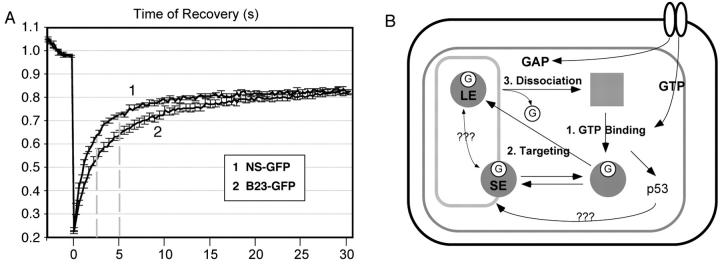Figure 5.
FRAP comparison of NS and B23, and a regulatory model for the dynamic distribution of NS. (A) The nucleolar residence time of NS is shorter than the non-GTP-binding B23. Photobleaching experiments were conducted as described in Fig. 3. Dotted lines indicate the points of analysis. (B) A multistep, GTP-driven model for the regulation of NS distribution. The three rectangular boxes indicate the cell membrane, the nuclear membrane, and the nucleolus (outside-in). The filled circles and square represent the GTP (G)-bound and unbound NS. In the nucleoplasm, the GTP-bound NS is released of the inhibitory activity mediated by the I-domain and can be targeted to the nucleolus. Binding to the nucleolus through the B-domain alone is short lived (SE). The long-term engagement (LE) of NS in the nucleolus involves the GTP-binding domain. Its release requires the I- and A-domains, and may be triggered by the dissociation of guanine nucleotides.

